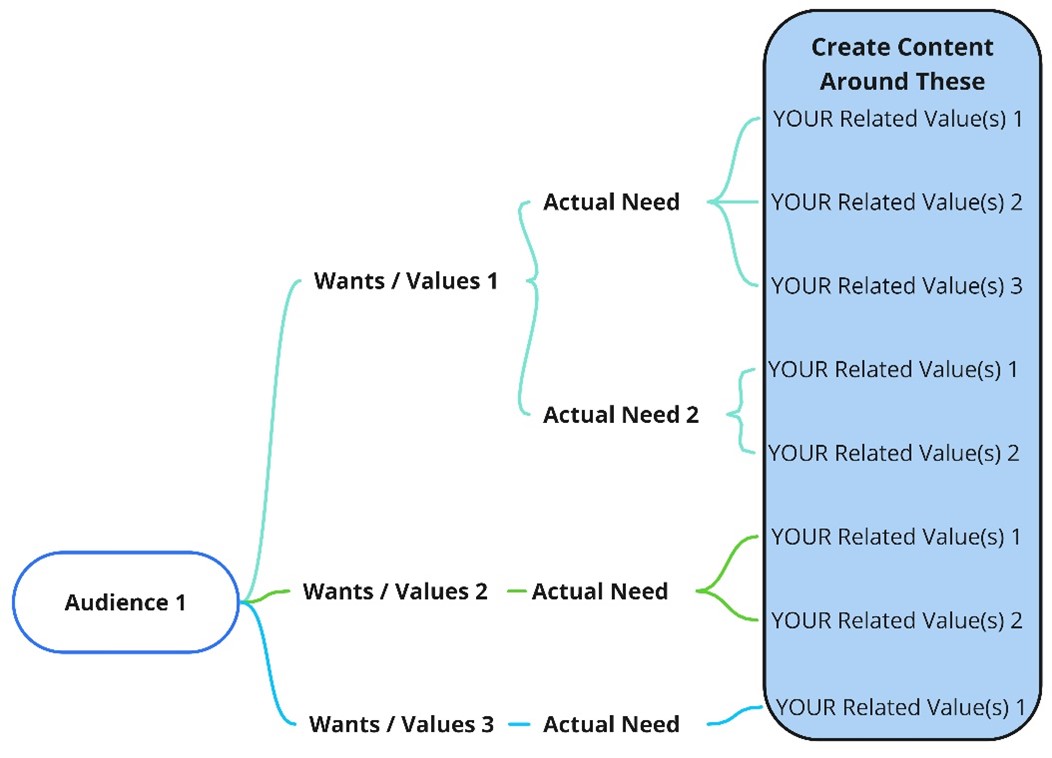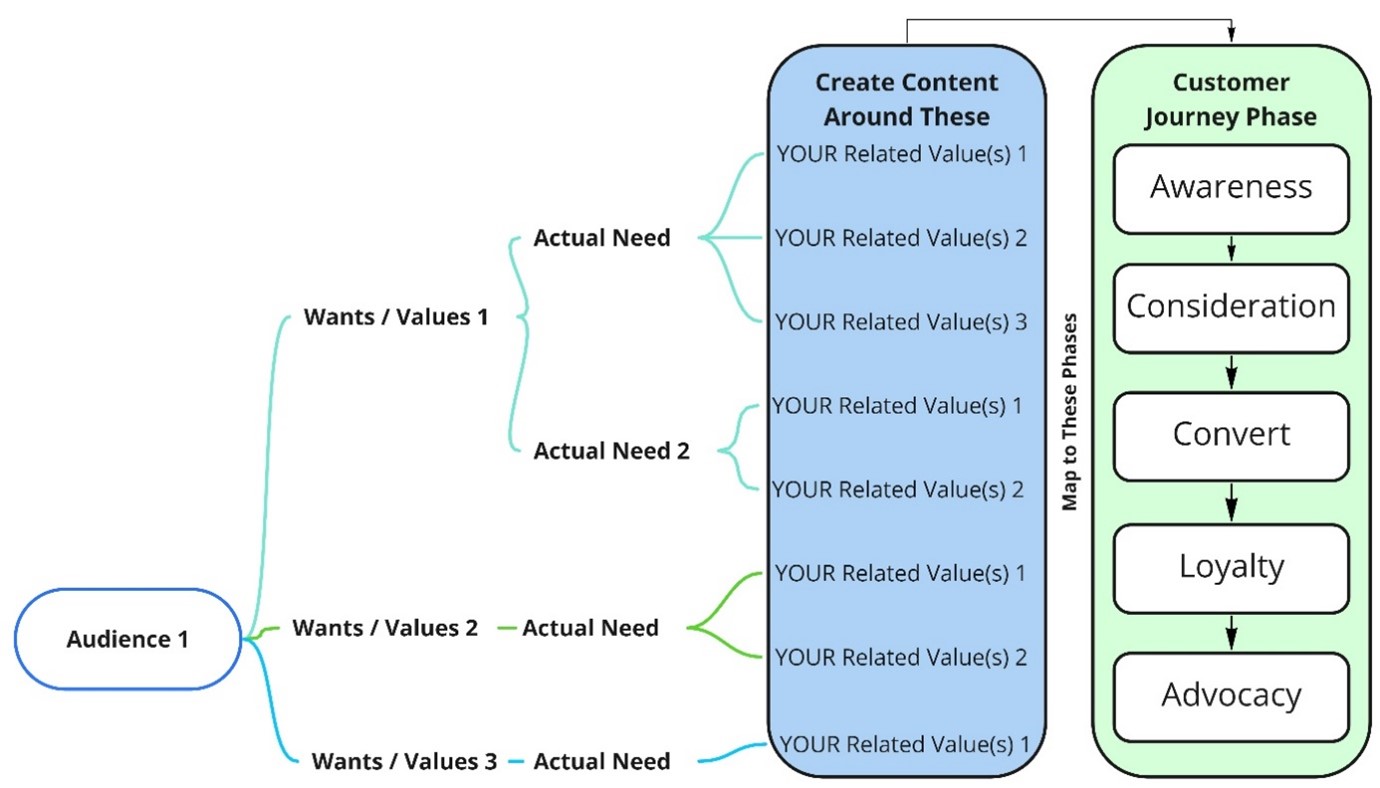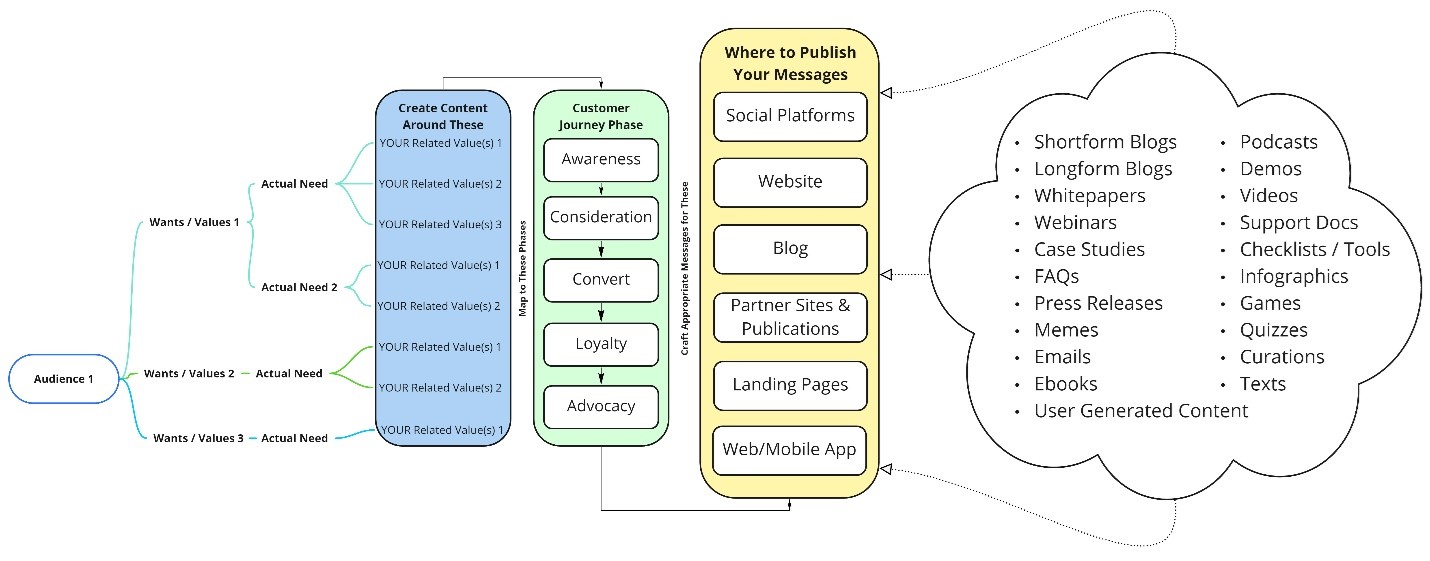Part 1: Content Strategy
It’s time to rethink your entire marketing and advertising strategy. No, really, it is. iOS 14 promises to curtail Facebook and other platforms’ long-standing (arguably uncouth, depending on whom you ask) data practices. Google Chrome, the most widely used internet browser by FAR, is moving to block third–party cookies, and the world is in the throes of a global pandemic that has upended marketing, advertising and general business “conventional wisdom” as a whole. With so much in flux, it’s time to get back to the basics. It’s time to stop working HARD and start working EFFECTIVELY. After all, aren’t most of us working more now than we ever have? By getting back to the basics and finding efficiencies in process and production, we can trim the excess, double down on our core competencies and spend less time guessing and more time converting. But all of that is easier said than done. In this series, we’ll take a look at some common-sense principles and methodologies that can help you realign your efforts with the impact you hope to see.
Recalibrate and Refocus: Build An Audience-Centric Content Strategy
While many marketers are stifled by a lack of planning and a documented strategy, many more suffer from option paralysis. They try to cover ALL the bases without stopping to ask the questions around what bases they should really be on. Overcomplicated content strategies, dozens of channels and touchpoints, and thousands of dollars per month of MarTech tools. With more out of our control than ever, it’s time to simplify because you can’t scale something that is unfeasible – and you’ll break yourself and your budget if you try.
Start by returning to your audience profile. If you don’t have one, create one (easier said than done, I know), because everything should center around who they are, where they spend time, what they want or value, and what they need. The last two sound redundant, but they aren’t always the same. Once you have a clear idea of these four data points, map your value and values back to them. Not your product, not your service, not your sales pitch. Your VAUE and VALUES. Your product/service may help you deliver the value, but they in themselves are not the value. Most marketers miss this point. That’s not to say that service/product promotional content should not be part of your communications mix, but they should not be the starting point.
It’s like the old adage says – when you start a journey, if you venture only a few inches in the wrong direction, you’ll be miles off the mark before long. To make sure you’re starting on course, create a map outlining the interdependence of these factors on paper.

When developing your content strategy, if the category doesn’t fit this map, consider whether it merits your time and attention (spoiler alert: it doesn’t at this stage). Remember, by simplifying and creating a clear rubric for content merit, we aim to reduce the scattered effort and double down on our core messages. Create content categories based on these brand values you represent and speak directly to the audience needs within those categories. Don’t pitch. Don’t sell. Be helpful and speak to those needs. Save ideas for content that doesn’t fit these categories to refer to later. I call the place for these ideas “The Parking Lot.” Save them until you’ve mastered the basics and are ready to expand your efforts and scale up.

Once you’ve established your customer data points and created your content categories, begin mapping them to the stages of the customer journey – Awareness, Consideration, Convert, Loyalty and Advocacy. This can act as your second check for “good fit.” If it can’t be mapped to one of these phases, put it in The Parking Lot. We’ll take a closer look at the customer journey’s phases and how they affect your overall content strategy in more detail in a later entry of the series.
Pull It All Together: The Who, What, When, Where and Why of Content
We’ve all heard of “starting with Why,” or some variation of that message – but that’s not the use of the term or the priority for this exercise. We can save that for Simon.
After figuring out your messaging strategy and the related subject matter, it’s time to determine the best place to have those conversations. It might be on your website’s blog or site pages, organic content on social media, guest posts on industry publications, another web property or a combination of multiples of these. But keep in mind, the order of priority is Who (the defined, specific audience) > Why (audience need) > What (value that speaks to that need) > Where (property where you’ll publish those messages). Only after these priorities are set should you then brainstorm the proper “vehicle” for those messages, also known as your How.

Too many marketers start a content initiative with the spark of “I need to create some video content”, or “our site needs whitepapers”, when that may not be the proper way to communicate the messages they’re trying to convey. Have you ever watched a video on social and thought to yourself, “Wow, that should have been a blog”? Maybe you’ve listened to a podcast that would have been a much richer experience with visuals and illustrations. Perhaps you’ve sat through a demo only to find yourself later having specific questions that an FAQ or knowledge base article could’ve answered.
The point is, too many people start with the content delivery mechanism rather than evaluating the best way to communicate the message. In doing this, you fall into the trap of lost efficiency. It may be possible that a What can be communicated by many How’s across many Where’s. By going through the content planning process in the correct order, you can build efficiencies by identifying these overlaps ahead of time and determining ways to reposition, upcycle and adapt the same (or very similar) message across multiple mediums for maximum effect. This is where you can truly start working smarter instead of harder. Because at the end of the day, content developed in a vacuum is content that speaks to no one.
Too many times, we invest hours of time and resources into content development only to have it result in a single blog post that gets buried in our feeds, a social post that gets nuked by the algorithm, or a video that gets forgotten in our growing library. By investing in the pre-work, we can save ourselves an unbelievable amount of time and frustration that comes along with developing fresh, new content ideas on a too-frequent basis.
By focusing on the last piece of our puzzle, the When, we can broadcast, syndicate and boost our content to our audiences across multiple channels. But timing here is key. A true audience-first content strategy doesn’t assault users with the same message across multiple channels with no regard for frequency, timing or intent. At times, the When will be the most important piece of the puzzle. It’s how the FAQ strengthens the demo, and the knowledge base entry solidifies the details.
These exercises, when executed properly and in the right order, will completely shape not just your content programs, but your communication efforts for both marketing AND sales in truly transformational ways.
Stay tuned for more posts in this series on creating a Powerful Multichannel Digital Strategy That Scales.



